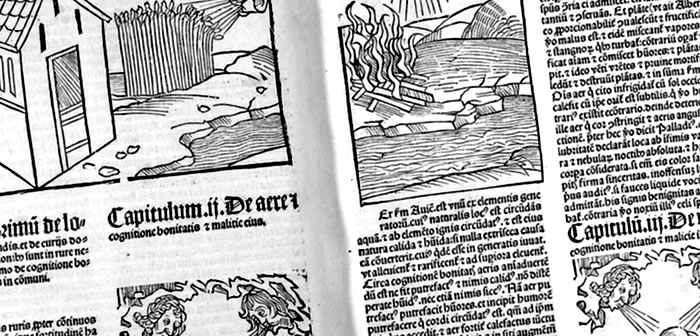
I recently stumbled across a book called the Ruralia Commoda or ‘The Advantages of Country-Living’. This book is a practical guide to farming and agriculture, garden design, botany, hunting and falconry BUT was written in 1306 by an Italian called Pietro Crescenzi. Pietro lived in Bologna, Italy and studied natural sciences at university there. He decided to produce a comprehensive guide to man’s practical use of the natural world (including plants and horticulture of course) spending several years putting it together. When finished it must have been quite something as 250 years after it was written Henry VIII still had a copy in his royal library and it was available across Europe.
The fact that Henry VIII had a copy of the Ruralia Commoda made me long to read some of it, but weirdly nobody had every translated the book from its original Latin into English. Efforts were made during the early Renaissance period (late 15th century with the invention of the printing press) to publish the book in French, German and Italian but not English. As a result, whilst the beautiful woodblock carved and printed illustrations of later Tudor editions are a marvel, the rest of the book is quite hard to decipher. Consequently I made it my mission to translate some of ‘book six’ which is dedicated to botany and plants including herb and vegetable growing. Who knows what tips or long lost knowledge might be lurking in there to the benefit of modern day allotment growers and gardeners?
Using a combination of the original Latin copies and later Italian copies I managed to pick out some herbs and vegetables that we grow today and send those texts in their original formats to a translator for publication in English. It’s been quite an exciting little project, each time a translation comes through I gasp and chuckle aloud as I read the translated text. In many ways our understanding of these herbs and vegetables today is little changed, but in others we are possibly missing out.
#MedievalGrowYourOwn
Over the coming days I will be publishing #MedievalGrowYourOwn vegetable and herb guides from history. Tips on growing, eating and utilising plants that in all probability have never been read in English. As you read through the texts, try to remember that you are reading the same information that medieval gardeners and doctors relied upon. The Ruralia Commoda is the ancient equivalent of ‘The Complete Gardener’ by Monty Don or ‘Food from Your Garden’ (by Readers Digest). I like to think that this project helps to maintain Pietro’s wisdom even though he himself has been dead for 698 years. It’s a weird thought though, can you imagine somebody reading Carol Klein’s ‘Grow Your Own Veg’ in 698 years? It’s good but is it 698 years old good?
[hr gap=”5″]Right Plant Right Purpose
In addition to containing plant cultivation information, book six of the Ruralia Commoda is something that might be referred to as a ‘herbals guide’. It contains descriptions of over 150 plants and their uses in the treatment of sickness and malaise. Even after the middle ages medicine was very much based upon plant remedies and a system of treating ailments that had been passed down from the Greeks like Dioscorides and Romans like Pliny the Elder.
Each plant description in the book refers to its use for a specific ailment and goes on to grade its medicinal usefulness in ‘degrees’. These degrees are not numerical, they are more like four ‘defcon’ stages of severity within a specific quality. Those qualities are ‘hot, cold, dry and damp’. Asparagus for example is ‘hot in the third degree’ which means that when consumed it raises heat to drive out imbalance and illness from the body. It’s quite hard to get your head around this ancient way of dealing with medicine without a visual aid, so here’s one I made earlier (click to enlarge):

The human body was largely thought of as being a balance of hot, cold, dry and damp (and linked to the four elements which came directly from our food to keep us healthy). The first ‘degree’ or ‘stage’ of a quality is the natural healthy state. Items in that group are therefore mildly refreshing (mint, chamomile, strawberries, cucumbers) and designed to keep us in balance whereas the higher degrees treat specific bodily problems. The ‘cold in the fourth degree’ plants are generally lethal by today’s standards and were presumably prescribed with great care. Rhubarb Root and Senna being the best treatments from chronic constipation tickles me immensely because very little has changed there.
Stay tuned for the forthcoming herb and vegetable translations over the coming days and keep an eye on #MedievalGrowYourOwn on Twitter.




